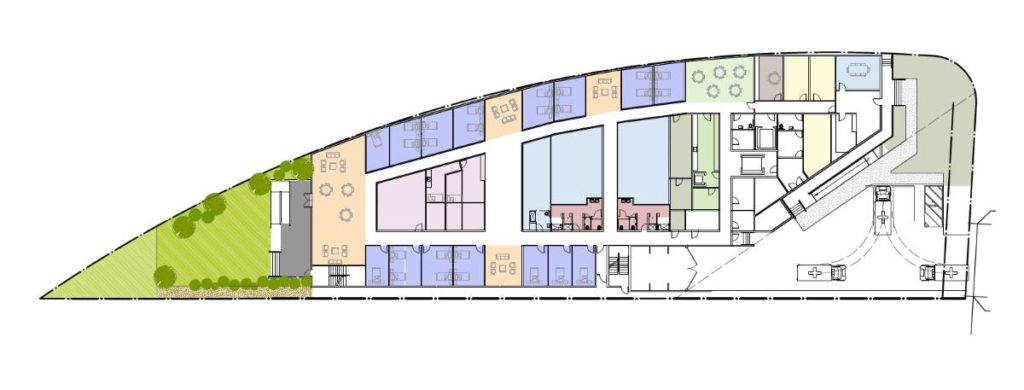Many Bay Area voters have long grown weary of the homelessness crisis. In February, Fremont’s city council voted 6-1 to finalize a law that bans encampments and prohibits storing personal property in public places. Citing a list of concerns including “violence, evidence of fires, excessive garbage and illegal dumping,” Fremont decided to crack down on some of the most visible signs of homelessness.
In May, marking another approach to creating safer and healthier communities, the nonprofit Bay Area Community Services (BACS) was granted $32M by the state of California to build an 83 bed mental health rehabilitation center in Hayward called Waypoint MHRC. The project was scoped based on Alameda County’s need assessments, and has a tentative completion date of 2028, said BACS chief operating officer Jovan Yglecias.
After years of public funding, trends are starting to look positive. Last year found a 3% decline in Alameda County’s homeless population. This is the first decline since 2013. Advocates believe mental health rehabilitation centers (MHRCs) are also important in continuing care. Unlike more intensive and expensive hospital psychiatric emergency visits, MHRCs help people to “get stabilized before reintegrating with the wider community,” Yglecias explained.

Fewer than a third of counties in California have MHRCs, according to the state’s Department of Health. Most are privately run by organizations like BACS, whose $111M budget last year largely originated from government contracts with multiple counties and cities.
As housing and other costs rise, programs that address homelessness seem to grow more expensive too. In 2020, BACS announced that its “Keep Everyone Housed” pilot program in Oakland took “less than $2,500 to prevent someone from losing their housing.” Four years later, an update showed that the expanded program’s average cost was now $5,700 per household, nearly double the national pace of inflation over the same period.
Despite mounting costs, preventative strategies may still be more effective and compassionate than allowing conditions to worsen for vulnerable households. A 2015 report cited by BACS noted that the top 5% of homeless individuals in Santa Clara County who required the most support incurred $100k annually in average costs, 20x higher than the average. This suggests it pays off to help people before they further deteriorate to strain public resources.
At the same time, it’s hard to draw conclusions about large-scale projects that tackle homelessness. A recent state auditor report noted that the government “has not consistently tracked and evaluated the State’s efforts to prevent and end homelessness.” Only two of five state-funded homelessness programs could be assessed for cost-effectiveness, while others had insufficient data.
Data on homeless people can also be difficult to pin down. Point-in-time counts offer fleeting snapshots and rely heavily on self-reported information about health conditions or durations. “The unsheltered population is not monolithic,” Yglecias said, urging the public to look beyond the most visible markers of homelessness. “We’re not treating or serving one kind of person here.”
At the current Wellness Centers run by BACS, “You don’t need to come in with a referral, you don’t even need to come in with a diagnosis,” Yglecias explained. “You just need to identify as someone needing help and walk in through the door.” With new infrastructure investment in Waypoint MHRC, the hope is for more folks to come in through the door and leave in a better state.




